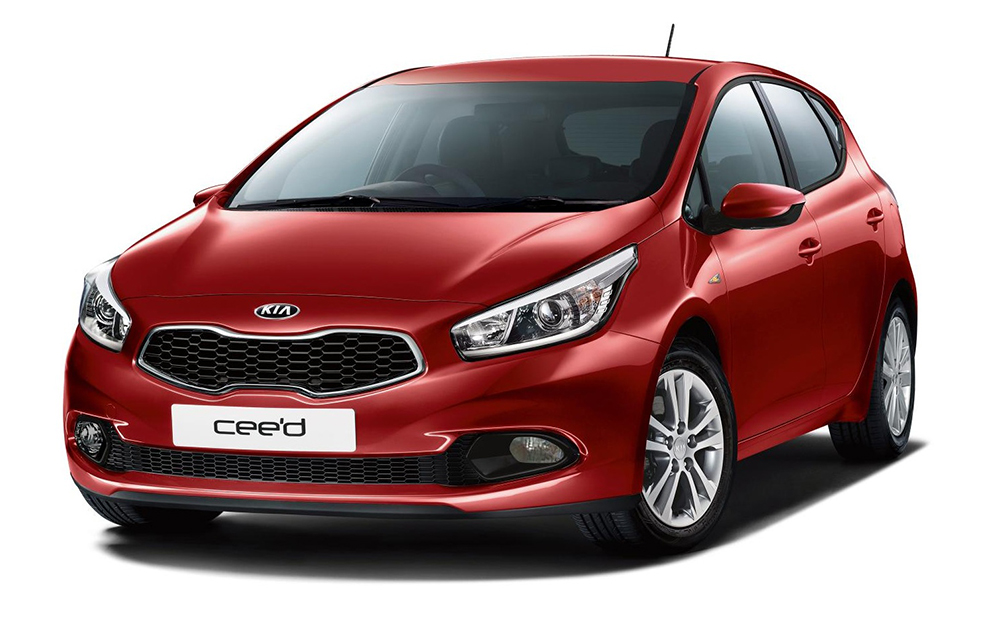Car clinic: Mud flaps for a Kia, roof rack for a convertible, new engine for a Ford C-Max
Everything from a roof rack for a convertible to a new engine for a Ford: nothing's too much for the experts behind Driving's Car Clinic reader-query service.

The car clinic experts
TIM’LL FIX IT
Tim Shallcross used to train AA patrols to fix cars. Now he advises the Institute of Advanced Motorists.
INSPECTOR GADGET
Dave Pollard has written several Haynes manuals and has tested just about every car-related accessory.
Q. I want to trade in my car for a hard-top convertible but I enjoy kayaking and need some way to transport my kayak to water. I’ve been looking at a BMW but my dealer tells me it is not possible to attach a roof rack. Are there any hard-top convertibles that can support a rack?
MM, Christchurch, Dorset
A. Conventional metal and plastic racks are not available for convertibles because of the risk of the roof being opened with the rack attached (or, worse still, with a kayak attached as well). This could damage the car or, if the roof were lowered while the car was on the move, as is possible with many modern drop-tops, it could cause an accident.
The best option we can find for any folding hard-top convertible is the HandiRack (£60 at handiworld.com), which the maker says is suitable for hard-top cabrios but not soft-tops. The HandiRack’s roof bars are actually inflatable tubes. It’s easy to fit and comes with a small pump.
Loads are secured with supplied straps but, as you’re probably aware, you’re well advised to add an extra tether at the front and rear of the kayak to stop it rocking forwards and backwards during the journey. The risk of opening the roof while something is attached remains, but because the securing straps pass inside the car above your head, you should be less likely to make this mistake.
Cheaper copycat versions of the HandiRack are available (the Streetwize Easy Rack, for example, currently reduced to £20 at Amazon) but we have not tried them out.
DP
Q. On wet roads both sides and the back of my Kia Cee’d get dirty quickly. I suspect the body shape is causing spray from the wheels to land on those areas of the bodywork. Would buying a set of mudflaps from Kia help?
KT, Solihull
A. The shape of a car determines how the air flows around it and how much dirt gets thrown up from a wet road. Some cars do seem to get dirty more quickly than others; hatchbacks are particularly prone to mucky rear doors and windows because the abrupt cut-off at the back creates a vortex as the car moves through the air, sucking mud and other debris up and on to the bodywork and rear window.
Mudflaps reduce the spray from the wheels, so there will be less dirt thrown up. The sills will be better protected from stone chips, too. Kia supplies mudguard kits designed for your car for £37 a pair; universal flaps are widely available from car accessory shops and on eBay for as little as £10. Universal mudflaps tend to be larger and will almost certainly reduce the spray more, but because they are closer to the road they can catch on speed bumps or potholes.
Universal flaps come with screws or clamps to fit them. Clamps are easier to fit — they attach to the lip on the inside of the wheelarch — whereas you have to drill holes for the screws, which can begin to rust after a couple of winters. Clamped guards are more prone to being pulled off should they catch on something, however.
Try to get into the habit of applying a coat of polish after you wash your car. This will make dirt much easier to remove, and the vehicle will retain its gleaming appearance for longer.
TS
Q. My daughter’s 07-plate Ford Focus C-Max broke down shortly after I bought it for her. It needs a new 1.6-litre petrol engine. The seller has agreed to pay 50% towards a replacement but has not been able to find one. A Ford dealer told me a new engine would cost £2,800 plus VAT. Would a reconditioned unit be a better option? My daughter is expecting twins so we need a solution quickly.
FS, London
A. There should be no problem in obtaining such a widely available engine, so it is hard to understand why your seller has failed to find one for several weeks. Instead try searching for a cheaper, used engine — look for a “remanufactured” one, not “reconditioned” or “rebuilt”.
The Federation of Engine Re-Manufacturers, or FER (fer.co.uk), sets out what its members must renew on a unit before they can describe it as remanufactured. By contrast, there is no real definition of a reconditioned engine: it may have been dismantled and rebuilt, or it may have been cleaned and painted — you have no way of knowing.
Some notorious engine reconditioning companies have been repeatedly closed down by the consumer protection authorities, only to reopen under a different name. Insist that your garage obtains an engine from a company listed on the FER website.
The price of a remanufactured engine will depend on the model; as a guide, Ivor Searle (ivorsearle.co.uk), an FER member based in Soham, Cambridgeshire, charges about £1,800 (plus VAT) for a Ford 1.6 petrol engine.
There is no delivery charge and the company may be able to supply an engine immediately from its stock. The company offers a £300 part-exchange discount for your old engine, provided it has suffered no external damage (which might prevent the company from repairing it and selling it on to someone else).
TS




